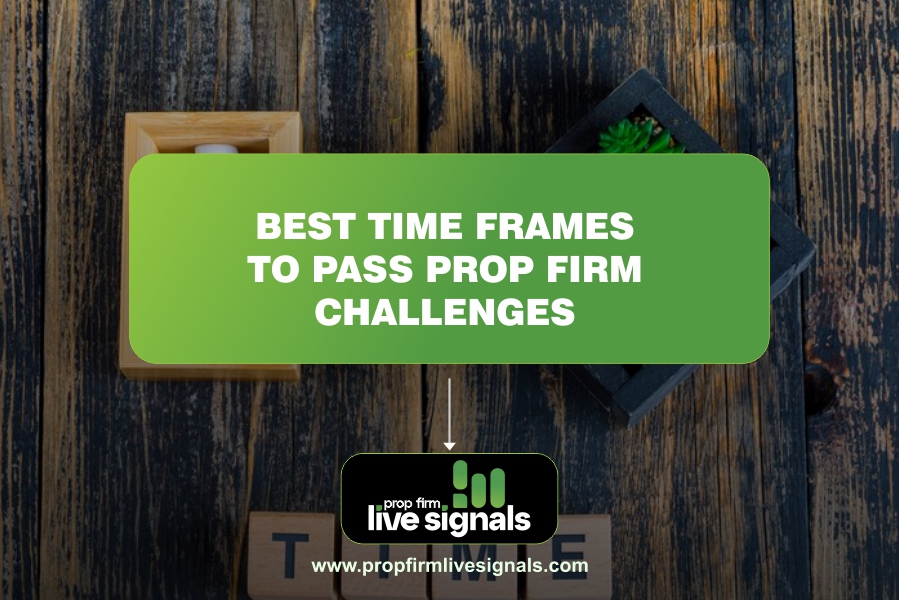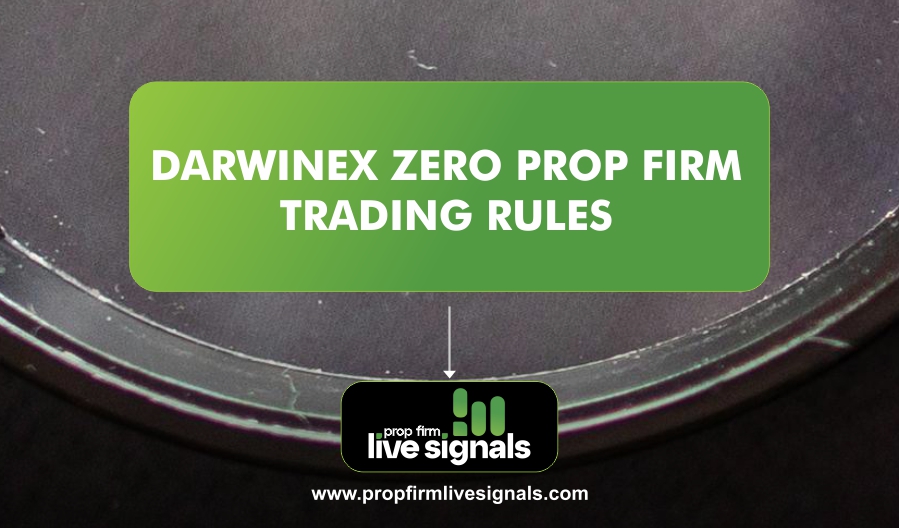Prop firms have been the latest sensation over the years among traders who are seeking for possible ways to utilize the firm’s capital based on their own risk financial management skim. This article will go over some of the best time frames traders seems to use in passing prop firms challenges.
Understanding Prop Firm Challenges
Proprietary trading firms, or prop firms in short, are organizations that let traders trade with the firm’s capital, not their own. This setup shields a trader from personal financial risk and enables him to put more concentration on strategy and execution.
However, before one is allowed access to this capital, there comes a series of checks popularly called prop firm challenges. The purpose of these challenges is to examine a trader’s skills concerning risk management, consistency, and profitability within certain trading conditions.
The Importance of Timeframes
The timeframes are quite significant in prop firm challenges. Each challenge, more often than not, has specified trading duration limits, profit targets, and maximum drawdown limits. It is through such timeframes that one can work out an efficient trading strategy that will suit the challenge requirements.
- Brief Challenges: Most prop firms have very strict time constraints for these challenges, and some will even require profit targets within weeks or less. This kind of setup makes for very high pressure, which forces traders into making quick decisions and rapid trade executions.
- Long-term Challenge: Some firms offer challenges with no tight deadlines or with longer evaluation periods. These allow traders to adopt a more measured approach, focusing on consistency and risk management over time rather than immediate profits.
Options on the Timeframe Evaluation
When considering which timeframe is best to pass prop firm challenges, traders should evaluate several factors:
- Trading Style: The trading style of a trader day trading, swing trading, or long-term investment will influence which timeframe best suits. While the ability to capitalize on rapid market movements would suit a day trader in the midst of short-term challenges, a longer evaluation period may be preferred by a swing trader who holds his positions over several days or weeks.
- Market Conditions: The prevailing condition of the market can also point at the appropriateness of different timeframes. While rapid and volatile markets may favor a short-term strategy exploiting price fluctuations within a very short time, stable markets may favor longer-term approaches.
- Psychology: This refers to the psychological robustness of a trader under duress. Most traders perform optimally when they have plenty of time to reflect on and execute trades; for others, they thrive under time pressure that forces them to decide at speed.
Optimal Timeframes for Passing Prop Firm Challenges
Trading in the financial markets requires identifying an appropriate timeframe, which impacts strategy, stress levels, and potential profitability. A look now at some pros and cons of three of the most usual trading timeframes:
1. Short-Term Timeframes (1-minute to 15-minute charts)
These timeframes are excellent for traders who desire to make profits from minor changes in prices. They offer the momentum to one’s decisions, presenting several chances to trade within the day. Nevertheless, they have their own set of challenges, which include higher levels of stress and further increased costs of operations due to frequent trading.
2. Medium-Term Timeframes (30-minute to 1-hour charts)
Medium-term charts strike a balance between quick trades and longer-term positions. They help filter out market noise, providing clearer signals, and enable traders to leverage both short-term volatility and broader trends. On the downside, achieving profit targets may take longer compared to short-term strategies, which can be a drawback in timed challenges.
3. Long-Term Timeframes (4-hour to daily charts)
Longer timeframes are best for analyzing broader market trends and making informed fundamental decisions. They offer less stress levels due to less frequent trading. However, the limited trading opportunities may slow progress toward profit targets, and there’s a risk of missing short-term market moves.
How to Succeed in Prop Firm Challenges
Regardless of the time frame a trader decides to use to complete a prop firm challenge, following are some strategies that could help increase his chances of success:
1. Formulate a Solid Trading Plan
The general trading plan should contain exact objectives on entry and exit points, treatment of risks, and also performance measures. Such a plan helps the trader stay focused on his objectives as he goes through the challenge amidst market fluctuations.
2. Emphasize Risk Management
Risk management in a prop firm challenge is everything. Traders must have straightforward rules set up regarding position sizing and stop-loss to prevent large losses from occurring. Stringently following such rules ensures the protection of one’s capital and at the same time reflects disciplined behavior, which is always demanded by prop firms.
3. Be Consistent
To pass prop firm challenges, consistency is the most important principle. Traders should aim for steady returns, rather than trying to be a risk-taker in one trade that would have led to a large drawdown. Only through a prudent attitude and sticking to one’s trading plan may one indeed build a track record of reliable performance.
4. Utilize Simulation Tools
Simulation tools or demo accounts can help traders hone their strategies before joining an actual challenge. These tools provide ample opportunity for one to perfect their techniques without any risk and acquire essential knowledge on what works best in different time frames.
5. Keep Abreast of Market Trends
With this challenge, a great deal of market news and trends may affect trading decisions immensely. Every day, each trader should include in his daily schedule studying economic indicators, earnings reports, and geopolitical events that might affect movements in the market.
Ready to Ace Your Prop Firm Challenge?
Take advantage of our LiveSignals, your go to resource for dependable, real-time trading signals, you can eliminate uncertainty from trading.
Our professionally examined setups, advice on risk management, and market analysis are all intended to help you achieve your trading objectives and confidently complete your prop firm challenge.
Sign up now and start using our LiveSignals to achieve continuous trading success!
Frequently Asked Questions (FAQs)
How long should it take to pass a prop firm challenge?
- The time it takes to pass a prop firm challenge varies on your all round ability (Skill level/ discipline) as a trader. On average the process takes 4 to 5 months. However it is very necessary to bear in mind that being an effective trader beforehand is not a quick process.
How to succeed in prop firm challenge?
To succeed in a prop firm challenge, traders should consider the following strategies:
- Develop a Solid Trading Plan: Outline clear entry and exit strategies along with risk management rules.
- Choose an Appropriate Time Frame: Select a timeframe that aligns with your trading style and allows you to manage trades effectively.
- Practice Discipline: Stick to your trading plan without letting emotions dictate your decisions.
- Utilize Risk Management: Implement strict risk management practices to protect capital and avoid significant losses.
- Analyze Performance: Regularly review trades to learn from mistakes and refine strategies.
Which one is more reliable?
- Longer timeframes, like daily and 4-hour charts, are more reliable as they filter market noise, provide clearer signals, and reflect broader trends, while shorter timeframes are more prone to volatility and false signals.
What are your chances of passing the prop firm challenge?
- The chances of passing a prop firm challenge can vary a lot depending on many factors such as the experience and strategy of the trader, his risk management skills, and the requirements of the challenge. Some traders may be able to pass on their first attempt, while for others, it will take multiple tries. In general, a trader who is well-prepared and knows the rules is likely to increase his chances of success significantly.
What time frame is best to trade price action?
- The most appropriate time frame for trading price action depends on the trader’s style and objectives. Experienced traders often prefer higher time frames like daily or 4-hour charts for clearer signals, while others choose shorter time frames like 1-hour or 15-minute charts for more frequent opportunities. Testing different time frames on demo accounts helps traders find what suits their strategy and comfort.
Is the prop firm challenge hard?
- The difficulty of a prop firm challenge might vary in various ways depending on the trader’s skill, experience, and familiarity with the specific demands of the challenge. Some traders, particularly those who are well-prepared, find passing easy because they have a firm understanding of risk management and trading strategies. To other traders, however, this is very difficult, especially for those who are undisciplined and inexperienced.




